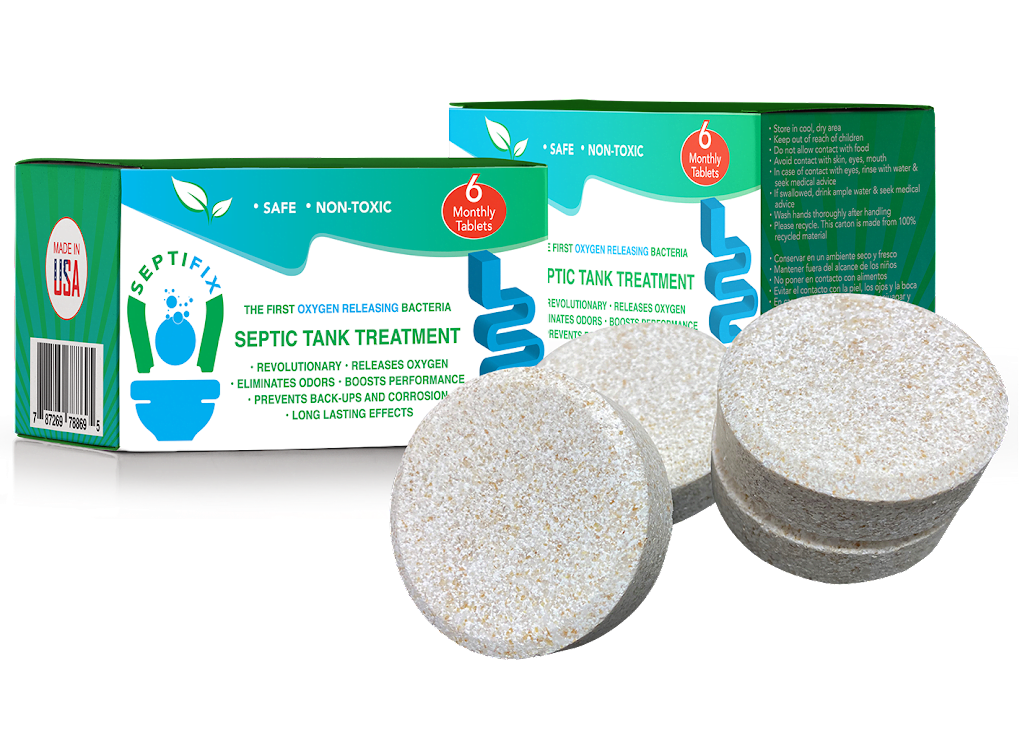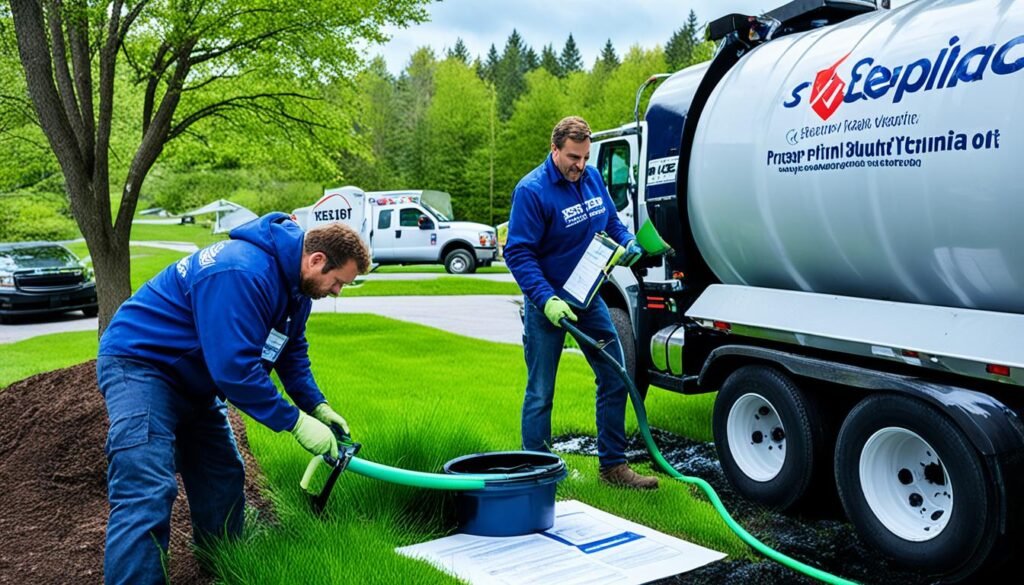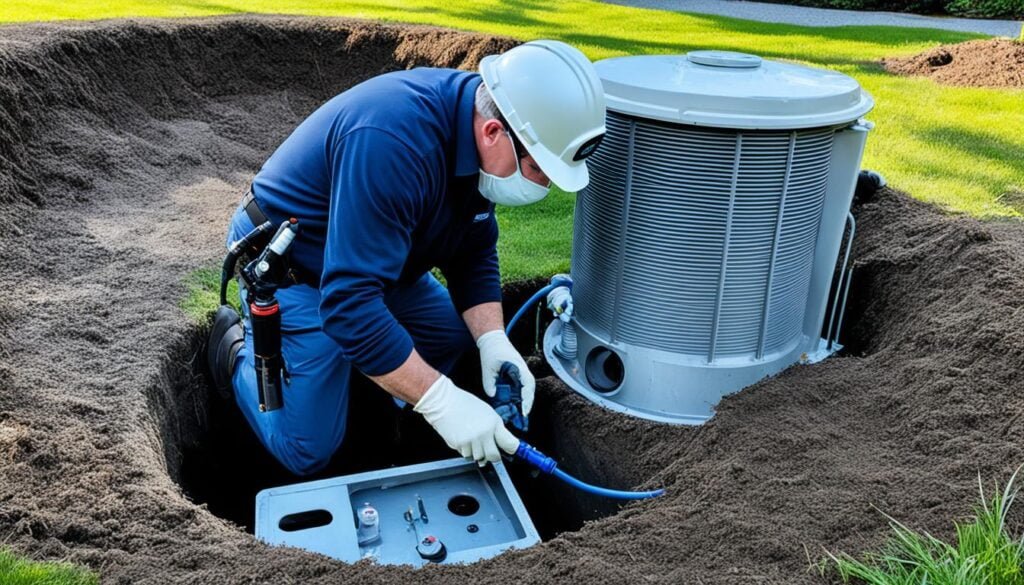Have you ever wondered what happens under your yard when you flush the toilet? Knowing how septic tanks work is important, especially if you don’t have a city sewer. This article will cover the basics of septic tanks, including their setup, how they work, and how to keep them running well. Knowing this can help avoid big repair costs and keep your septic tank working correctly.
Key Takeaways
- Septic tanks are key for waste management in homes without city sewers.
- Keeping your septic tank in good shape can save you from big repair bills.
- Knowing how to install your septic tank can greatly improve its performance.
- Regular checks are key to making sure your septic tank works well.
- Spotting signs that your septic tank needs attention can prevent bigger issues later.
Understanding What a Septic Tank Is
A septic tank is vital for managing wastewater in rural areas without city sewer systems. It can handle 1,000 to 2,000 gallons of wastewater right on the property. This system treats the wastewater before it goes back into the ground.
Septic tanks are made of strong materials like concrete, fiberglass, or plastic. They keep wastewater in and separate solids from liquids. After treatment, the clean water flows into a drain or leach field.
There, it is naturally filtered as it goes into the soil, which finishes the treatment process.

SEPTIFIX will save you hundreds, if not thousands of dollars each year, because your septic system will run smoothly and you won’t have to worry about calling the pumpers or a plumber for a fix!
Click here to save up to 50%
| Component | Function |
|---|---|
| Septic Tank | Stores and treats wastewater by separating solids from liquids |
| Drain Field | Filters treated effluent into the soil for natural purification |
| Inlet Pipe | Directs wastewater from the home into the septic tank |
| Outlet Pipe | Allows treated effluent to flow into the drain field |
Homeowners need to know how septic tanks work. This knowledge helps with efficient sewage treatment and keeping the system running well.
How Does a Septic Tank Work?
A septic tank works by separating and breaking down waste. This is key for effective wastewater treatment. Wastewater enters the tank, where solids sink to the bottom as sludge. Oils and grease rise to the top, forming scum. The middle layer, called effluent, goes into the leach field for more cleaning.
This cleaning in the leach field removes harmful bacteria and viruses. It ensures that the treated water goes back into the ground safely. Keeping up with maintenance and checks is crucial to avoid problems like overflows and contamination. Homeowners need to know these key practices for their septic systems.
Septic Tank Maintenance: Key Practices
Keeping your septic tank in good shape is key to its long life and efficiency. Homeowners should get their tanks pumped every three to five years, depending on how big their house is and how much water they use. Regular checks prevent expensive fixes and keep your septic system running well.
It’s also important to fix leaks fast. Fixing leaks helps reduce the extra water load on your septic system. Using low-flow fixtures can also help keep the system balanced. These steps help protect the environment by avoiding overloading the tank.
Also, avoid using non-biodegradable items and harsh chemicals. These can harm the good bacteria that break down waste. By being careful with what you put in, you help your septic tank work better and avoid strain.

SEPTIFIX will save you hundreds, if not thousands of dollars each year, because your septic system will run smoothly and you won’t have to worry about calling the pumpers or a plumber for a fix!
Click here to save up to 50%
Septic Tank Installation: What to Consider
Planning is key for a successful septic tank setup. Picking the right spot for your septic system is crucial. A good location means your system works better and needs less upkeep over time.
Choosing the Right Location
When picking a spot for your septic system, consider a few things. It should be far from clean water sources to keep drinking water safe. Also, make sure the area doesn’t have low spots that could cause water to pool, which could make your system less effective.
Understanding Soil Type and Drainage
Knowing about the soil in your area is important for your septic tank. How well the soil drains affects how well it filters wastewater. Soil with more holes means better absorption, which is key for a healthy drain field. Checking the soil’s drainage helps ensure your septic system meets health and environmental standards.
| Soil Type | Porosity | Drainage Characteristics | Impact on Septic System |
|---|---|---|---|
| Sandy Soil | High | Excellent drainage | Rapid absorption, less risk of saturation |
| Clay Soil | Low | Poor drainage | High risk of saturation, may require special design |
| Silty Soil | Medium | Moderate drainage | Good for absorption, occasional monitoring needed |
| Loamy Soil | High | Good drainage | Best option for septic systems, balanced absorption |
Signs Your Septic Tank Needs Pumping
Knowing the signs of septic issues is key for homeowners with septic systems. Slow draining in sinks or toilets is a clear sign of trouble. Another warning is smelling sewage around the tank or drain field, which means the system might be full or not working right.
Watch out for standing water in your yard, which often means your septic tank isn’t working well. These problems need quick action to avoid bigger issues, like sewage backup. Regular checks and maintenance are crucial. They keep the system running smoothly, making septic tank pumping essential.
Septic Tank Cleaning: Best Practices
Keeping your septic tank clean is key for a well-working septic system. Regular cleaning extends the system’s life and avoids expensive repairs later. Homeowners should plan for cleaning and pumping based on their tank’s use and local laws.
Cleaning Frequency and Importance
Experts suggest cleaning your septic system every 2-3 years. However, this can change depending on your household size and water use. If you have a big family or use a lot of water, you might need to clean it more often.
Sticking to a regular cleaning schedule helps prevent system failures and blockages, keeping your septic system working properly.
Common Cleanup Products and Techniques
Choosing the right cleaning products for your septic tank is crucial. It’s best to use septic-safe items like vinegar and baking soda. These keep the good bacteria in the tank healthy. Avoid harsh chemicals and too many oils or solids, as they can cause problems.
Getting professionals for regular cleanings ensures that you follow local rules and keeps your septic system running smoothly.

SEPTIFIX will save you hundreds, if not thousands of dollars each year, because your septic system will run smoothly and you won’t have to worry about calling the pumpers or a plumber for a fix!
Click here to save up to 50%

Common Septic Tank Problems and Solutions
Homeowners often face various septic tank issues that can damage the system. Fixing these problems quickly helps prevent further damage and keeps the system running longer.
Identifying Blockages and Overflow
Blockages in a septic tank can happen from flushing the wrong items or putting too much waste in. These issues often cause overflow, a big risk of sewage backing up into your home. It’s key to watch for these problems early and fix them fast. If you think there’s a blockage, you might need to pump the tank to get things flowing again.
Dealing with Odors and Drain Field Issues
Bad smells from sewage often mean there’s too much sludge or problems in the drain field. These smells worsen living conditions and show you need to check the drain field. Fixing these smells quickly stops bigger problems from happening. It keeps the septic system working well and protects the environment around it.
Importance of Regular Septic Tank Inspections
Regular septic tank inspections are key to keeping your septic system working well. They help spot early signs of problems like wear, blockages, or damage, so you can fix these issues before they turn into costly repairs. Inspections check the tank’s state, look for leaks, and see how the drain field is doing.
By performing proactive maintenance with regular checks, you will follow local health rules, know what your system needs, keep your property’s value up, and protect public health.

Conclusion
Learning about septic tank basics is key for homeowners. It helps them manage their systems well. By knowing how to care for their septic tanks, homeowners can dodge costly problems caused by neglect.
Regular upkeep, like routine checks and following local rules, is crucial. It keeps septic systems running well for a long time.
Working with certified septic tank experts is a smart move. They help with installing and cleaning septic systems. They also do important checks that help systems last longer and work better. These steps help homeowners and protect the environment from harm.

SEPTIFIX will save you hundreds, if not thousands of dollars each year, because your septic system will run smoothly and you won’t have to worry about calling the pumpers or a plumber for a fix!
Click here to save up to 50%
Keeping a septic system in good shape boosts property value and keeps the community healthy. Homeowners can rest easy knowing their systems work right by focusing on septic tank care. This also reduces the risks linked to bad maintenance.
FAQ
What is a septic tank?
A septic tank is an underground system for treating sewage. It’s used in places without city sewers. It holds wastewater, separates solids and liquids, and lets treated water soak into the ground.
How often should I have my septic tank pumped?
You should get your septic tank pumped every three to five years. This depends on your home’s size, how much you use it, and local rules. Pumping it regularly stops system failures and saves money.
What are the signs that my septic tank needs maintenance?
Signs your septic tank needs work include slow drains, bad smells, and water over the drain field. If you see these, call a septic tank expert right away.
How can I maintain my septic system effectively?
Keep your septic tank in good shape by pumping it regularly, not flushing things you shouldn’t, using less water, and choosing safe cleaners. This keeps the good bacteria that breaks down waste.
What should I consider when installing a septic tank?
Think about where to put your septic tank, the soil type for drainage, and local rules for depth and distance. This helps make sure it works right.
What types of cleaning products are safe for my septic tank?
Use safe cleaners like vinegar and baking soda for your septic tank. Avoid harsh chemicals and too much grease. They can mess up the system and harm the good bacteria.
What are common problems associated with septic tanks?
Problems include blockages from wrong items flushed, too much water causing overflows, and bad smells from too much sludge or drain field issues. Regular checks can spot these early and fix them.
How does a septic tank work to treat wastewater?
Wastewater goes into the septic tank, where solids settle at the bottom and scum forms on top. The middle layer, effluent, goes to the drain field to be filtered and soaked into the soil, cleaning the water.
Why are regular septic tank inspections important?
Checking your septic tank often keeps it working well and stops big problems. It finds damage or blockages early, saving you money and following health rules.

SEPTIFIX will save you hundreds, if not thousands of dollars each year, because your septic system will run smoothly and you won’t have to worry about calling the pumpers or a plumber for a fix!
Click here to save up to 50%


